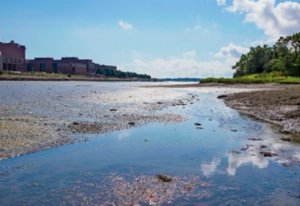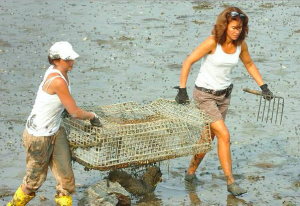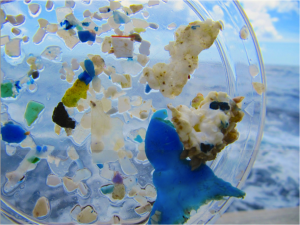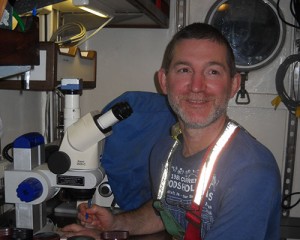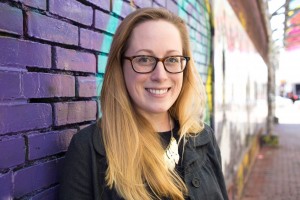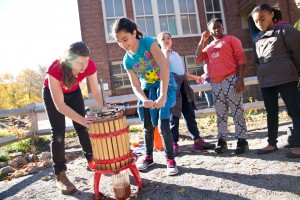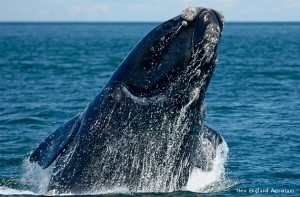Moving forward with the Keystone XL pipeline, delaying the youth climate change lawsuit, approving the first offshore oil wells in the Arctic, and disbanding the EPA’s air pollution review panel—these are just a few of the actions the current administration has taken to roll back environmental protections. President Trump is not focused on prosecuting environmental crimes. Rather, he seems to have made it a priority to do the opposite. These actions are disheartening for environmentalists, and a threat to the health and well-being of people across the country.
The National Environmental Law Center (NELC) is a Boston-based non-profit litigation center that was founded in 1990. Its purpose is to ensure anti-pollution laws are enforced and to promote long-term solutions to the nation’s biggest environmental problems. NELC works with state and local citizen groups by educating them on the legal field to help protect public health and the environment. Our nation’s unique environmental laws allow citizens to pursue legal action against companies that violate the laws. The NELC serves as a major force in public interest litigation, especially in suits upholding our nation’s core environmental laws.
Josh Kratka is a senior attorney at NELC. He graduated from Harvard University in 1979. After college, he worked in union organizing, where he became passionate about standing up for the rights of others. When it came time to choose what he wanted to pursue as a career, he was deciding between becoming a history teacher and going to law school. He chose law school, saying “I saw a career as a lawyer as a more practical life choice.” Josh graduated from Northeastern University School of Law in 1984.
After law school, Josh wanted to build on his union experience by working in labor law. Legal positions in that field were hard to come by, so Josh worked a variety of different jobs. He served as a law clerk for the Superior Court of Massachusetts. He worked as a staff attorney for Massachusetts Public Interest Research Group. After a few years of advocating for environmental and consumer protection laws, Josh decided “the lobbying industry wasn’t for him personality-wise”. He took his love for the environment to NELC in 1994.
Instead of lobbing for new laws, attorneys at NELC monitor compliance with existing environmental laws. “We look at government records and report any violations that we find to the appropriate agencies,” says Josh. If the government doesn’t take legal action against the violating corporations, NELC will. When the NELC attorneys take action, they fight to win both fines for damages and court orders to block illegal practices. Their work holds polluters accountable for their environmental destruction.
One of the biggest cases Josh has worked on in his time at NELC is Environment Texas, Sierra Club v. ExxonMobil. The decision for this case was just handed down by the court in 2016. The plaintiffs that NELC represented argued that ExxonMobil committed 16,386 days of violation of the Clean Air Act at its refinery and chemical plant complex in Baytown, Texas. The court originally ruled in favor of Exxon at trial, and NELC appealed the verdict.
At the appeals court, the judge ruled in favor of the plaintiffs, whom NELC represented, and sent the case back down to the trial court. This time, the federal district court ordered Exxon to pay $20 million in damages, the largest civil penalty ever imposed in a citizen environmental suit. The ruling was a huge victory for NELC. Now, Exxon has appealed the most recent court decision, so NELC and Josh are back in court.
Over the past 28 years, NELC has focused on bringing violators of the Clean Water Act and the Clean Air Act to justice. They have brought over 100 enforcement cases, winning millions of dollars in court-ordered penalties and pollution reduction measures.
Another focus of NELC attorneys is ensuring that environmental regulations are fully and fairly enforced by the appropriate governmental agencies. If an agency fails to properly regulate an industry, NELC will seek a judicial review of the agency regulations, essentially trying to win court orders that direct the agency to enforce the environmental law as Congress intended it to. NELC attorneys will also file “friend of the court” briefs in the federal and Supreme Court systems. This is another way to take legal action when environmental laws are being threatened, or the public right to participate in the implementation of those laws is being endangered.
Luke Metzger, the director of Environment Texas, said after the ruling against Exxon: “This ruling shows how crucial the citizen enforcement provision of the Clean Air Act really is…it means that private citizens victimized by the world’s biggest polluters can get justice in the American court system, even when government regulators look the other way.” Unfortunately, this is a result of the Trump administration’s rolling back of environmental protections, allowing the EPA to look away from pollution problems.
When speaking to Josh, it is clear that he is passionate about his job. Most of the companies that NELC files suit against are operating facilities in low-income neighborhoods. “People here don’t have as much political power or a voice to be able to tell the company to stop polluting,” Josh explains. “These are big companies that can afford to comply with environmental laws, and there is no reason why they should break the law and get away with it just because there isn’t as much government oversight as there needs to be.” When there is a failure of government enforcement of the laws, either by the Environmental Protection Agency or the states, NELC can step in to fill the gaps and help those who need it most. Passionate attorneys like Josh work to keep the federal government and corporations accountable for their decisions that damage the environment.

 Jacopo Buongiorno has had a jam-packed schedule touring the world in the last couple of months. But Buongiorno is no pop star or blockbuster actor as one might expect. He’s a professor of nuclear engineering at MIT. He’s a different kind of famous—famous in the world of nuclear energy research and academia. He has drawn attention for a September 2018 MIT study he co-chaired called “The Future of Nuclear Energy in a Carbon-Constrained World”. Since its publication, he has traveled to London, Paris, Brussels, Washington, D.C., Tokyo, and Canada where audiences are eager to learn about the study’s groundbreaking findings on nuclear energy.
Jacopo Buongiorno has had a jam-packed schedule touring the world in the last couple of months. But Buongiorno is no pop star or blockbuster actor as one might expect. He’s a professor of nuclear engineering at MIT. He’s a different kind of famous—famous in the world of nuclear energy research and academia. He has drawn attention for a September 2018 MIT study he co-chaired called “The Future of Nuclear Energy in a Carbon-Constrained World”. Since its publication, he has traveled to London, Paris, Brussels, Washington, D.C., Tokyo, and Canada where audiences are eager to learn about the study’s groundbreaking findings on nuclear energy. To achieve the “real impact” Buongiorno hopes for, public engagement will be essential. Contrast education with engagement. Buongiorno no longer uses the former term because of negative connotations attached to it. Namely, education implies a power imbalance between scientists and the people who are concerned with the introduction of unfamiliar technologies into their communities. Educating to Buongiorno looks something like “a smart MIT professor going to Nevada and saying, ‘Let me tell you it’s okay to have a [radioactive waste] repository here.’” Engagement is more about including the public in decision-making discussions from the beginning, instead of just telling people the decisions are set and they have to accept them because the science says it’s okay.
To achieve the “real impact” Buongiorno hopes for, public engagement will be essential. Contrast education with engagement. Buongiorno no longer uses the former term because of negative connotations attached to it. Namely, education implies a power imbalance between scientists and the people who are concerned with the introduction of unfamiliar technologies into their communities. Educating to Buongiorno looks something like “a smart MIT professor going to Nevada and saying, ‘Let me tell you it’s okay to have a [radioactive waste] repository here.’” Engagement is more about including the public in decision-making discussions from the beginning, instead of just telling people the decisions are set and they have to accept them because the science says it’s okay.











